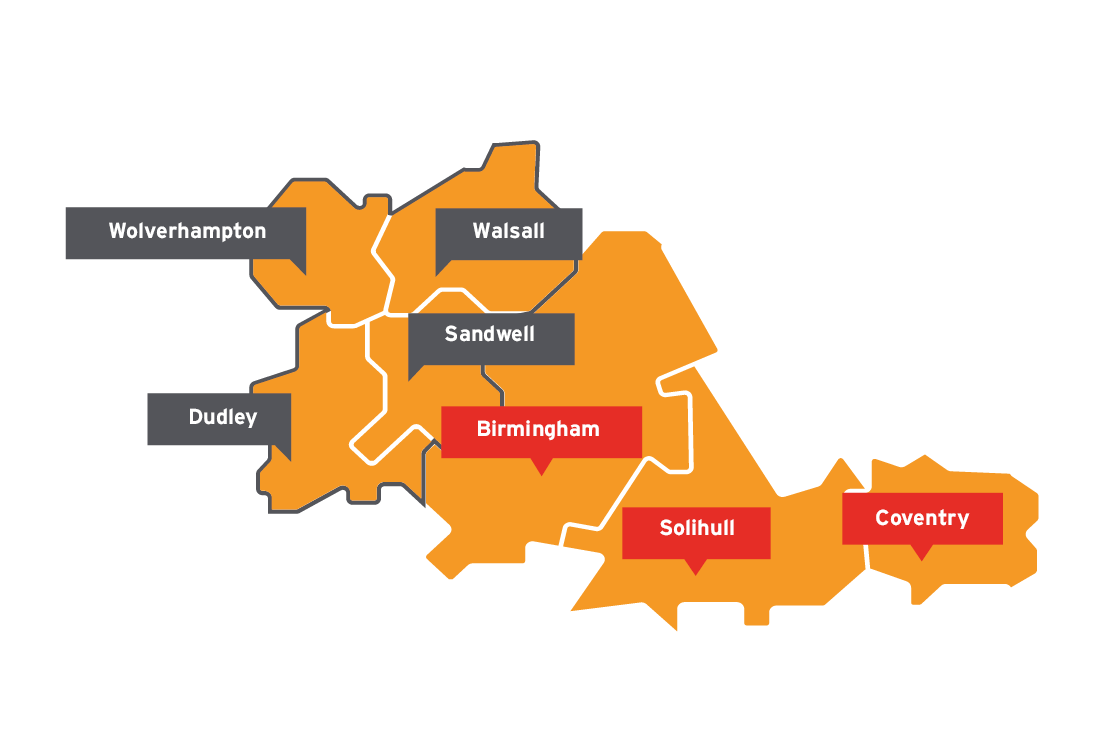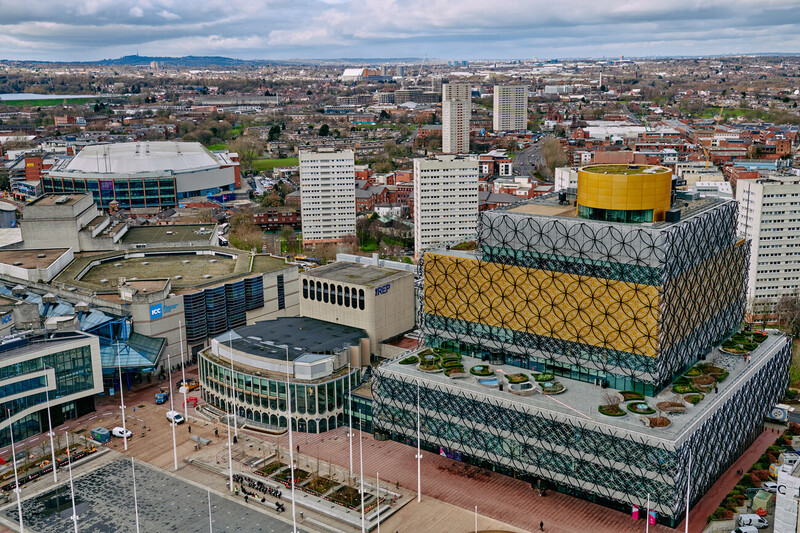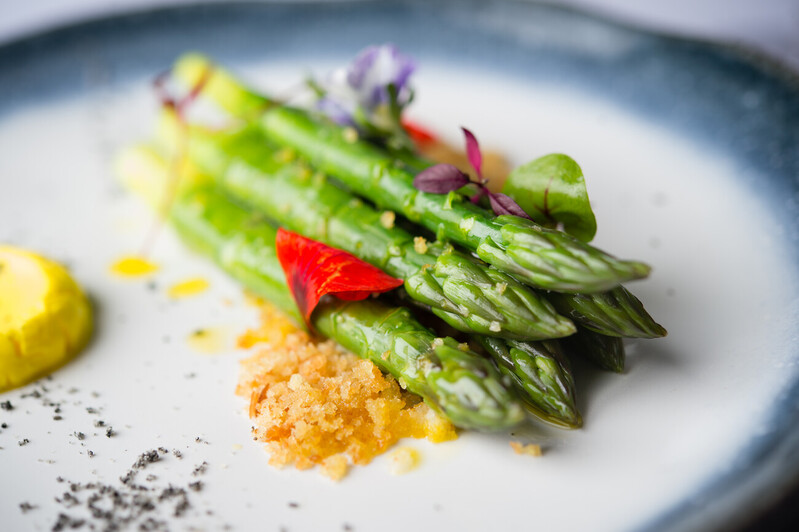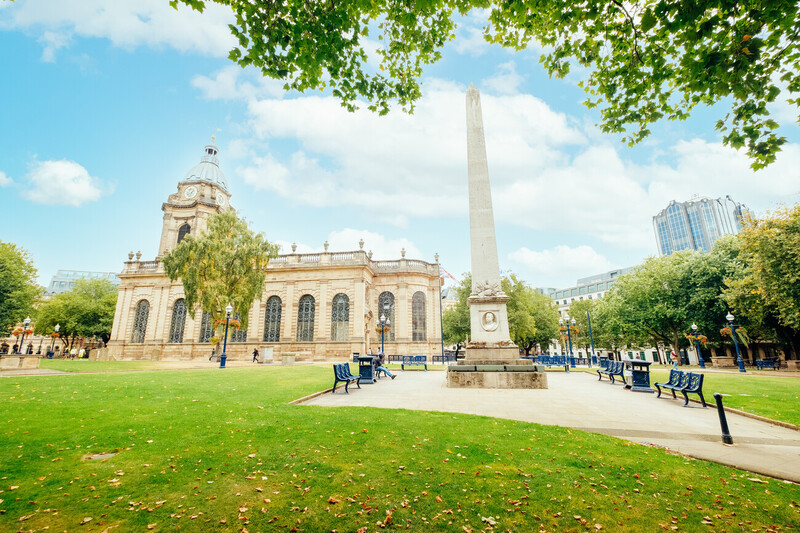.jpg)
Birmingham is an old city with a unique history. It was built on the back of industry – industry that can still be seen in the bricks and mortar of the city today.
While its history may be sooty, it has evolved into a modern, green city with a thousand interesting things to find around every corner. So, let’s get to know this fantastic city a little bit better.
1) Why is Birmingham called the Black Country?
Birmingham is not called the Black Country. Birmingham and the Black Country are two separate areas of the West Midlands Region.
Birmingham is the UK's second largest city, located in the centre of the West Midlands region.
The Black Country is in the northeast of the West Midlands region, and is named so because of the sheer scale of industry there during the Industrial Revolution. The many chimneys from the coal, coke, iron, steel, glass and brickworks would pump black smoke into the air, colouring the sky. This, combined with the 30-foot-thick coal seam that ran beneath the area, gave it its iconic name.
Despite often being associated with Birmingham, the Black Country is its own section of the larger West Midlands. The Black Country is comprised of Wolverhampton, Dudley, Walsall and Sandwell.

The area’s burning furnaces and forges were the fiery heart of the Industrial Revolution, and the thousands of smokestacks were the soldiers leading the march on progress. The developments in manufacturing here shaped the rest of the world, and wherever you go in Birmingham or the West Midlands, you can see the influence.
Canals spiral out from Brindleyplace in Birmingham, old highways used to transport masses of goods that have been revitalised and now create a unique, waterfront atmosphere for visitors. Whether it’s walking along the canals, dining next to them, or dining on them, they are from a flavourful past that enhances our modern city.
However, despite our past being somewhat sooty, the city has used that strong foundation to make huge gains in creating a greener city. Under our zero-carbon emissions by 2041 pledge, you can see hydrogen-powered busses, clean air zones, and Green Innovation parks for cutting-edge companies to work on making the future cleaner.

Birmingham wears its history on its sleeve. You can walk our streets and see it or discover it in a much more tangible way. The Black Country Living Museum is dedicated to bringing the past to life. Almost every child who went to school in the West Midlands has fond memories of exploring the lovingly recreated historical streets on school trips and getting yelled at by terrifying Victorian schoolmarms in replica classrooms. You too can explore the past and get hands-on with history.
Or, for a more chocolatey taste from the past, you can visit Cadbury World. Situated in Bourneville, the interactive museum gives an insight into the scale of production that put Birmingham on the map (and yes, you get to try the chocolate yourself!
Does Birmingham have any other nicknames?
Yes! As well as being called the Black Country, the city itself is also called Brum by the locals. By extension, those locals also refer to themselves as Brummies.
Although it is hard to pinpoint exactly where the nickname came from, it is likely related to the historical name of the area, Brummagem.
Any 90’s kids out there might also recognise it as the name of the loveable little yellow car from the TV series Brum.
2) What food is Birmingham famous for?
Above and beyond the city’s exceptional culinary expertise, Birmingham is famous for one food: the Balti.
This style of curry gets its name from the “bucket” it is cooked in, not a particular ingredient. Modern takes on it usually see it cooked and served in a thin, deep bowl, which keeps the unique flavours rolling while eating.
Despite being popular in India and Pakistan, the Balti has strong roots in Birmingham, from where it spread to the rest of the UK. The Balti Triangle, in the southeast of Birmingham, stretches from Sparkbrook to Sparkhill to Balsall Heath.
To this day, you can still get an authentic, Birmingham Balti from restaurants like Shababs in the Balti Triangle.
3) How big is Birmingham?
Birmingham and the West Midlands is a conurbation. Which means it’s pretty big!
There are 1.1 million people living in Birmingham, and 4.7 million across the West Midlands Combined Authority.
Birmingham is also the most diverse core city in the country, with 42% of us belonging to an ethnic minority. It’s one of the reasons we have such a diverse and colourful culture, with annual festivals hailing from all cultures across the world.
4) How many cities does Birmingham have?
Birmingham itself is only one city, but it shares the West Midlands region with multiple other cities.
In the West Midlands, you’ll also find the cities of Wolverhampton and Coventry, and the towns of Solihull, Dudley, Sandwell, and Walsall.
5) What's unique about Birmingham?
Every city is unique, and Birmingham is no different, with a certain set of charms that set it apart from all the rest. Here are just some of the things that make Birmingham unique.
The people
As mentioned above, Birmingham has a large population, one of the most diverse in the country. It makes Birmingham a truly unique place to visit, explore, and celebrate.
From interesting restaurants cooking up foods from all over the world to street parades to festivals, Birmingham has it all.
The NEC
The National Exhibition Centre is the UK’s largest event space. It opened in 1976 and has grown far beyond its original seven exhibition halls. Today, the 18 halls host everything from concerts to craft shows to indoor motorbike races.
The huge area is situated outside of Birmingham, next to Birmingham Airport. The area has its own lake, which it shares with Resorts World Birmingham. Here you can shop, dine, bowl, game, watch a movie, relax or stay the night.
There is enough packed into the area to warrant an entire weekend trip all by itself. Have a look at upcoming concerts and head on over.
Birmingham Library
Speaking of iconic exteriors, the Library of Birmingham is not only the largest public library in the United Kingdom but is said to be the largest public cultural space in Europe. The exterior of the building is a complex pattern of crisscrossing circles that make it immediately recognisable.
It was opened in 2013 by Malala Yousafzai and dominates one side of Centenary Square (where you might remember the Birmingham Bull standing after the 2022 Commonwealth Games).

The Peaky Blinders
If you want proof of the significance of Birmingham’s unique history, you need look no further than the television phenomenon of the Peaky Blinders.
If you’ve enjoyed a single episode of Tommy Shelby’s criminal antics, then that’s down to Birmingham. Our history isn’t shiny and clean, it’s the soot-stained hands of real men and women who worked hard to lay the foundations for the fantastic city it is today. It’s what makes us so interesting and such a compelling backdrop for TV.
As such, there is plenty throughout the city paying homage to the infamous gang, from escape rooms to themed ale houses. Discover Peaky Blinders attractions in Birmingham.
The Bullring and Grand Central
The retail heart of Birmingham is the Bullring and Grand Central. Birmingham New Street Station seamlessly merges with Grand Central shopping centre, which itself is connected to the Bullring.
Hundreds of shops, cafes and restaurants are waiting, whether you’re hopping off a train or walking in past St Martin’s church. It’s hard to miss the iconic sequined exterior of the Bullring.
Food
The West Midlands has the most Michelin Star restaurants in the country outside of London. What can I say, we Brummies love our food!
There are 11 Michelin Star restaurants in the West Midlands, with 5 in Birmingham itself. Definitely worth a trip, so find a Michelin Starred restaurant in Birmingham, or take a comprehensive look at all Birmingham restaurants.

5 bonus facts about Birmingham
Birmingham is a large city, in terms of size, population, and historical importance. Around every corner is a new delight, quirk, or jaw-dropping experience. Here are 5 facts you may not know about Birmingham.
1) Aston Villa once lost the FA Cup – literally!
Having beaten West Bromwich Albion 1-0 in the 1985 FA Cup final, Aston Villa victoriously paraded the original trophy through the streets of Birmingham to where it was to be kept on display at a local football gear shop.
Unfortunately, before the sun had risen, the trophy was stolen!
Although it was never recovered, in 1958 a man claimed to have been responsible, and said that the trophy, known as the Little Tin Idol, had been melted down the same night. Aston Villa was fined £25 for the loss and ordered to replace the trophy. Luckily, they were from Birmingham, the ‘workshop of the world’ and soon had a replacement made in the Jewellery Quarter.
2) You can reach 90% of the UK from Birmingham in under four hours
Birmingham is central. It means we have some of the best connectivity infrastructure in the country. And, it means we’re within reach of just about anywhere!
We may not have a coast, but you can take your pick of beaches and head there in under a day.
It means that Birmingham is the perfect staging ground for any UK holiday. Stop with us, see a show, and in the morning you can be anywhere else in the UK.
3) Birmingham has the largest collection of Pre-Raphaelite art
One of the richest collections of Pre-Raphaelite art can be found right here in Birmingham.
The extensive collection can be found at the Birmingham Museum and Art Gallery. It contains well over 2,000 pieces from this significant historical movement.
This style of painting aims to capture images as true to life as possible, making each frame a window directly into the past.
Find an art gallery or museum in Birmingham.
4) Birmingham is a very green city
There are around 600 parks and green spaces in Birmingham, around 14 square miles.
This is thought to be more than any other European city, making us one of the greenest places to visit.
As well as the huge number of spaces dotted throughout the city, we are also home to Sutton Park, one of the largest single urban parks in Europe.

5) Birmingham is the youngest city in Europe
28% of Birmingham’s population is under the age of 20, and 36% is under the age of 25. That is an incredible number and makes us one of, if not the, youngest city in Europe.
It means we’re alive, we’re vibrant, our city streets bustle and our nightlife is electric. The city may be old and steeped in history, but the people here are young and excited!
From the Jam House to the Custard Factory, our nightlife mixes with our iconic buildings to create a night out you’ll never forget.
Related
Comments
Comments are disabled for this post.









